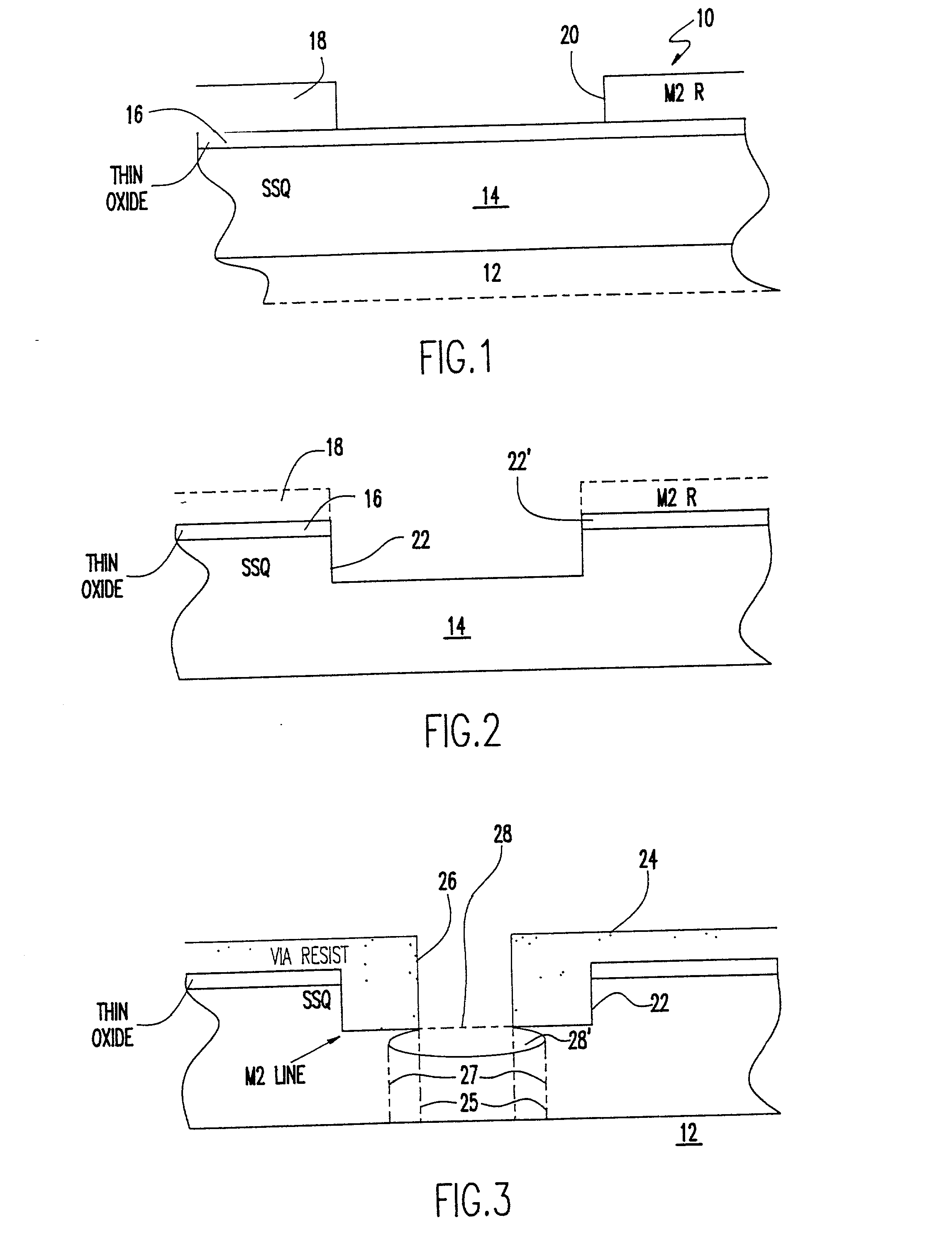Interim oxidation of silsesquioxane dielectric for dual damascene process
a technology of silsesquioxane dielectric and damascene, which is applied in the direction of semiconductor devices, semiconductor/solid-state device details, electrical equipment, etc., can solve the problems of rapid propagation cracks caused by relatively minor physical damage, unprotected ssq materials are not generally considered suitable for layer formation, and most ssq materials are easily attacked
- Summary
- Abstract
- Description
- Claims
- Application Information
AI Technical Summary
Benefits of technology
Problems solved by technology
Method used
Image
Examples
Embodiment Construction
[0024] Referring now to the drawings, and more particularly to FIG. 1, there is shown in cross-section, an early stage in dual Damascene processing to produce conductors at a surface of structure 10 including an integrated circuit chip 12 having devices such as transistors, capacitors and underlying connections (not shown) formed thereon, an SSQ dielectric layer 14, a thin oxide dielectric layer 16 and a patterned resist layer 18. It should be understood that FIGS. 1-3 are not to scale and are disproportionately enlarged in some regions in the interest of clarity. It is also to be understood that while FIGS. 1 and 2 depict early stages of a well-understood dual Damascene process and FIG. 3 is illustrative of the effects of resist development in the absence of the invention, no portion of FIGS. 1-3 is admitted to be prior art as to the present invention.
[0025] The illustration of FIG. 1 assumes prior deposition, processing (e.g. drying), exposure and development of resist layer 18 to...
PUM
 Login to View More
Login to View More Abstract
Description
Claims
Application Information
 Login to View More
Login to View More - R&D
- Intellectual Property
- Life Sciences
- Materials
- Tech Scout
- Unparalleled Data Quality
- Higher Quality Content
- 60% Fewer Hallucinations
Browse by: Latest US Patents, China's latest patents, Technical Efficacy Thesaurus, Application Domain, Technology Topic, Popular Technical Reports.
© 2025 PatSnap. All rights reserved.Legal|Privacy policy|Modern Slavery Act Transparency Statement|Sitemap|About US| Contact US: help@patsnap.com


